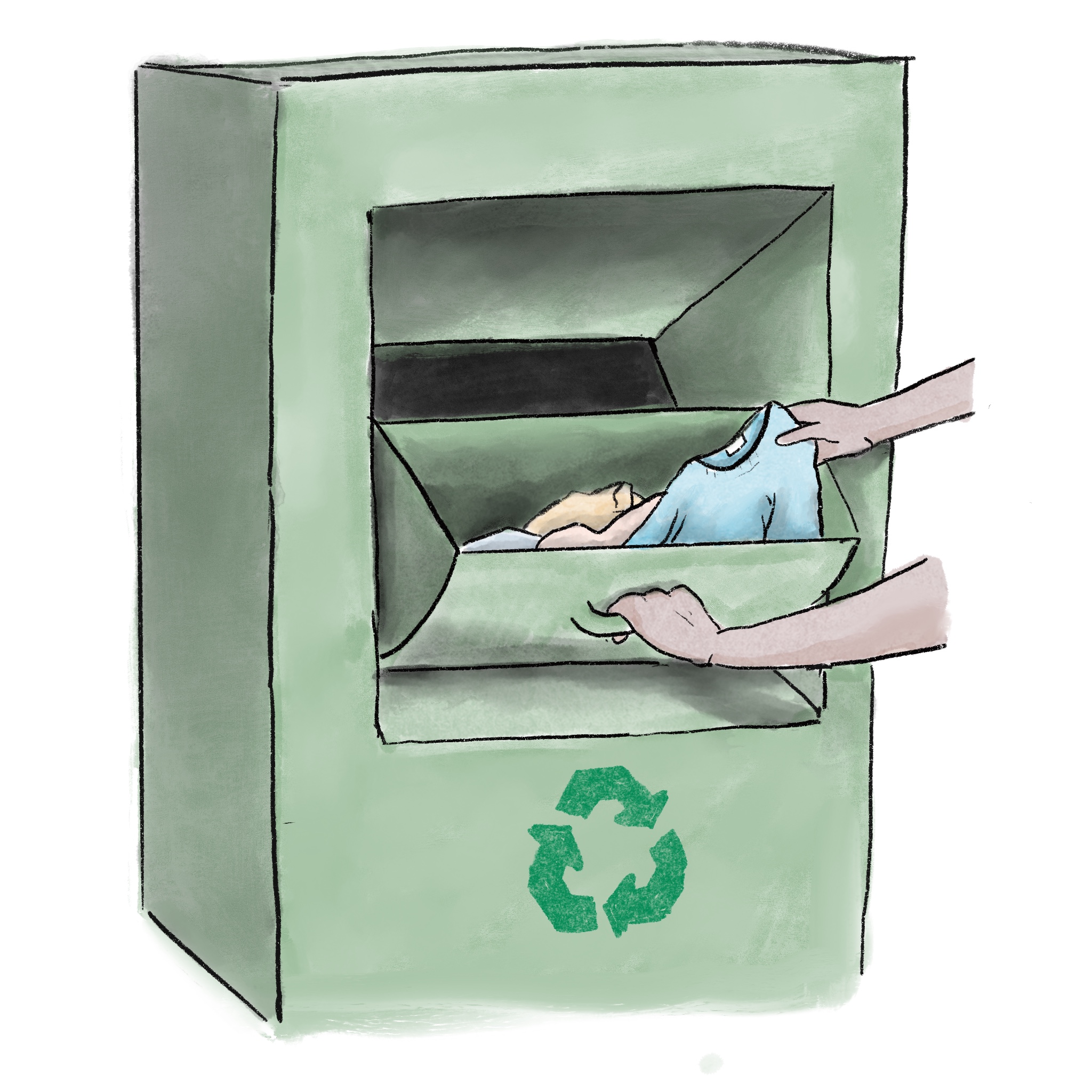Garment Care
Our Garment Care Guide provides details for you to help extend the life of your clothing while minimising environmental impact. Following these guidelines reduces wear and conserves water & energy in your garment care routine.
1. Washing and Drying
Correct washing and drying techniques will help preserve your garments condition.
-
• Spot Clean where possible & hang to air out. Very often garments do not require a full wash, so spot cleaning a stain may be all that's required to continue wearing. Hanging to air out in a well ventilated area for a short time is particularly effective at keeping a garment feeling and smelling fresh.

-
• Hand washing provides a controlled and gentle approach to cleaning. It uses less water and energy compared to machine washing, and is a great option to consider particularly if you only have a small number of pieces to launder.

-
• If machine washing, washing at the lowest temperature possible and on a gentle spin will help reduce wear on garments, prevent colour fade & shrinkage, and minimises energy consumption.

-
• Use a wash bag to protect delicate items if machine washing. Garments with straps may be stressed in a machine wash, it's advisable to pop them inside a wash bag to best protect.

-
• Line drying reduces wear and energy consumption compared to tumble drying.

-
• Laying knitwear flat to dry is a gentle and effective way to ensure that the garment retains its original shape, fit, and texture.
 • Most of our knits are lanolin-rich, and some customers do note the lanolin smell. The presence of lanolin in our woollen yarns is a quality signature, and we wouldn't recommend washing this out. Indeed, the lanolin itself helps to make the knit self-cleaning, and the garment will respond well to spot-cleaning in place of regular laundering. A lanolin smell will naturally subside over time and normal use.
• Most of our knits are lanolin-rich, and some customers do note the lanolin smell. The presence of lanolin in our woollen yarns is a quality signature, and we wouldn't recommend washing this out. Indeed, the lanolin itself helps to make the knit self-cleaning, and the garment will respond well to spot-cleaning in place of regular laundering. A lanolin smell will naturally subside over time and normal use.
2. Storing Garments
Properly storing garments contributes to maintaining their form and overall quality.
-
• Hanging shirts, blouses and tees on a wide hanger can help maintain shape and prevent creasing.

-
• Fold and stack your knitwear. This will prevent stretching and any marks which may occur if otherwise stored on a hanger.

-
• Trousers with a pleat should be folded along the pleat then hung up over a trouser hanger. This should help keep the detail of the pleat.

-
• Store in a cool, dry place away from direct sunlight to prevent fading.

3. Garment Maintenance
Well practiced maintenance and small repairs to a garment are a practical way to maintain and extend the life of your clothing, benefiting both you and the environment.
-
• Steaming is a versatile and effective method for removing wrinkles, refreshing fabrics, and maintaining the quality of garments, especially those made from delicate or sensitive materials. It offers a convenient alternative to ironing for many types of fabrics.

-
• Conducting minor repairs on a garment is a sustainable and pragmatic approach to uphold and prolong the lifespan of your clothing, offering benefits to both you and the environment. Simple fixes like replacing a missing button or re-stitching a seam can be easily managed at home with a basic sewing kit. If you ever have any uncertainties regarding a repair, feel free to reach out to us for guidance on any related inquiries.

-
• Pilling. Over time, natural fibres, especially in knitwear, can develop pilling, particularly in areas that experience a lot of wear. Employing gentle methods like a fabric shaver or pumice stone is highly effective in preserving both the longevity and visual appeal of your garment.

4. End of Lifecycle
Thoughtfully managing the disposal of clothing, whether through recycling, donating, or repurposing, leads to waste reduction and can help resource conservation.
-
• Resell. Utilising reseller platforms provides an effective method for wardrobe management, enabling you to convert clothing and accessories into funds while ensuring their continued use.

-
• Donate. Donating clothing effectively prolongs usability, provides assistance to those in need, and contributes to reducing landfill waste.

-
• Recycle. Many towns and cities offer facilities for textile recycling where you can drop off old clothing and textiles. Please check with your local waste management or recycling centre for information on their specific guidelines and procedures.
